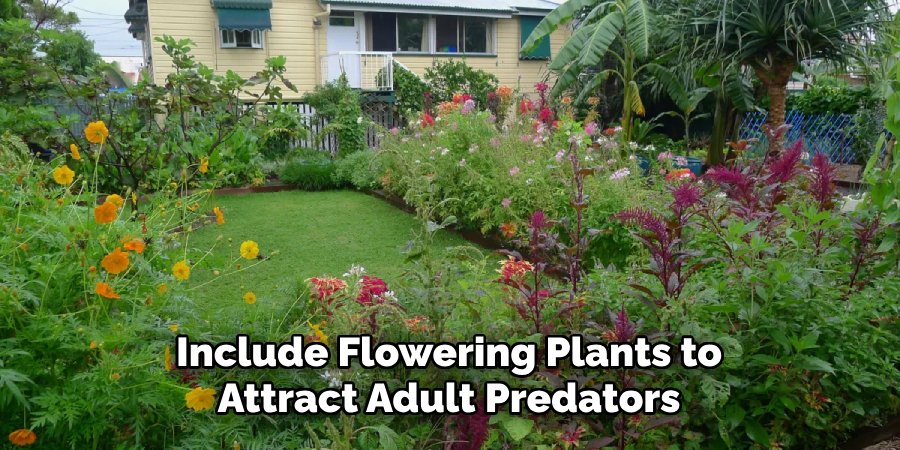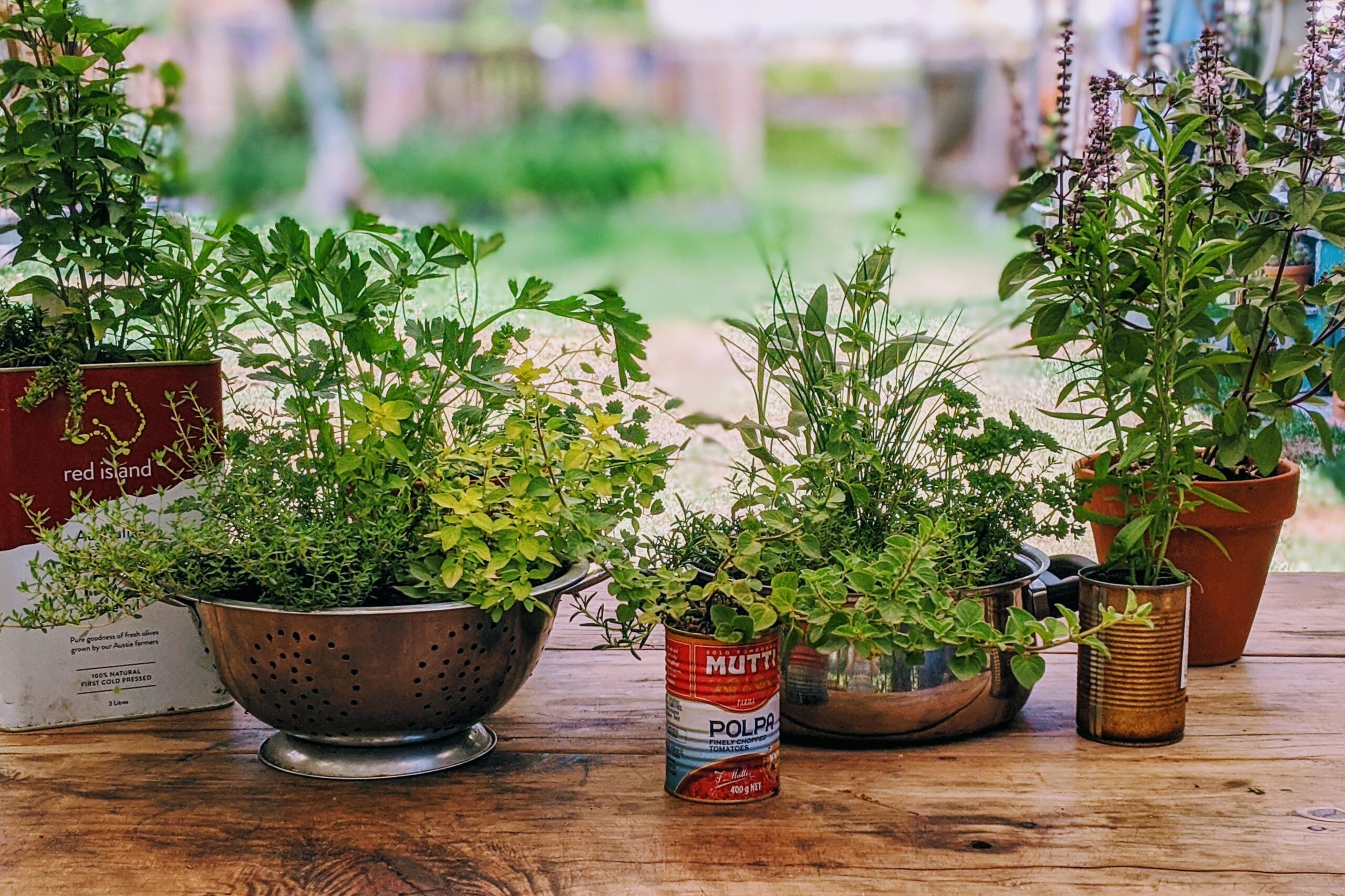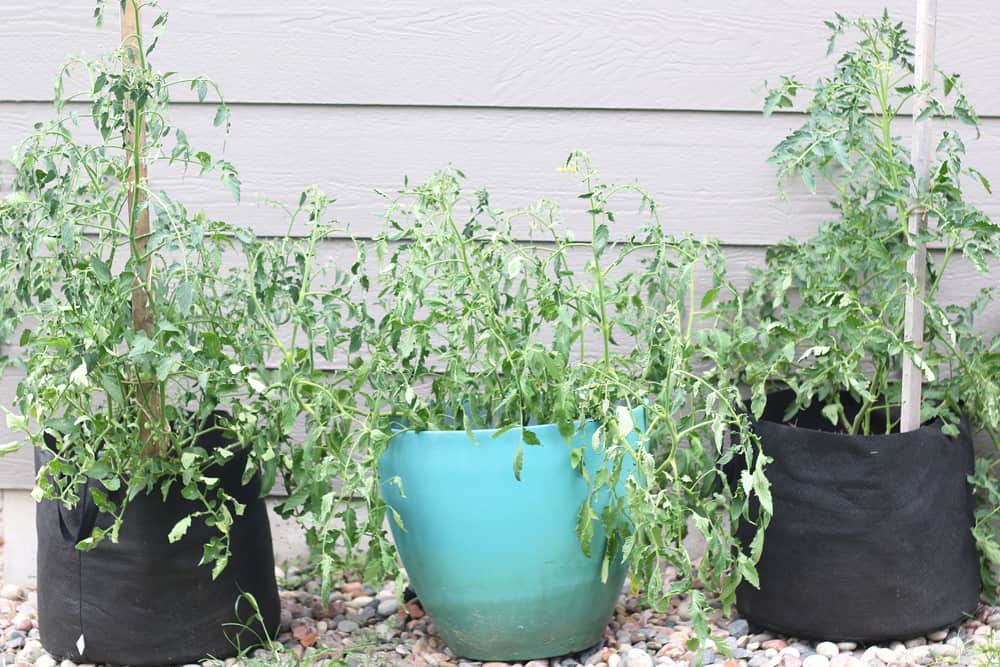
Unleashing Nature’s Guardians: Attracting Native Predators to Your Garden
Imagine a garden teeming with life, not just the plants you’ve carefully cultivated, but also a vibrant ecosystem where balance reigns supreme. Instead of relying on harsh chemicals to control pests, what if you could enlist the help of nature’s own exterminators? Attracting native predators to your garden is not just an eco-friendly approach to pest management; it’s about creating a thriving, self-regulating environment that benefits both your plants and the wider ecosystem. This comprehensive guide will delve into the fascinating world of native predators, exploring how to identify them, understand their needs, and transform your garden into a haven that welcomes these beneficial creatures.
Why Attract Native Predators? The Benefits of a Natural Ecosystem
Before we dive into the “how,” let’s explore the “why.” Why should you dedicate time and effort to attracting native predators? The answer lies in the numerous benefits they bring to your garden and the broader environment.
Natural Pest Control: A Chemical-Free Solution
The most obvious benefit is, of course, pest control. Native predators are nature’s pest control experts. Ladybugs devour aphids, lacewings feast on mealybugs, and birds gobble up caterpillars. By attracting these creatures, you’re essentially creating a self-regulating system where pest populations are kept in check naturally, without the need for harmful pesticides. This is crucial for protecting not only your plants but also the health of your soil and the well-being of other beneficial insects and pollinators.
Promoting Biodiversity: A Healthier Ecosystem
Attracting native predators goes hand in hand with promoting biodiversity. A diverse ecosystem is a healthy ecosystem. When you provide habitat and food sources for a variety of predators, you’re also supporting a wider range of other creatures, from insects and amphibians to birds and small mammals. This interconnected web of life creates a resilient environment that is better able to withstand environmental changes and disease outbreaks.
Reducing Reliance on Harmful Chemicals: Protecting the Environment
Pesticides, while often effective in the short term, can have devastating consequences for the environment. They can contaminate soil and water, harm beneficial insects, and even pose risks to human health. By attracting native predators, you can significantly reduce your reliance on these harmful chemicals, protecting the environment and creating a safer space for yourself, your family, and your community.
Creating a More Beautiful and Engaging Garden
A garden teeming with life is simply more beautiful and engaging than one that is sterile and lifeless. Watching ladybugs patrol your roses, listening to the chirping of birds hunting for insects, and observing the intricate dance of predator and prey can be incredibly rewarding. Attracting native predators adds a new dimension to your gardening experience, transforming it from a chore into a fascinating exploration of the natural world.
Identifying Native Predators: Knowing Your Allies
The first step in attracting native predators is to know who your allies are. Different regions have different native predators, so it’s important to research which species are common in your area. Here are some of the most common and beneficial native predators you might find in your garden:
Ladybugs (Coccinellidae): Aphid Assassins
Ladybugs are perhaps the most well-known and beloved of all garden predators. Both the adult beetles and their larvae are voracious eaters of aphids, mealybugs, and other soft-bodied insects. They are easily recognizable by their bright red or orange shells with black spots.
Lacewings (Chrysopidae): Mealybug Munchers
Lacewings are delicate, green insects with lacy wings. Their larvae, often called “aphid lions,” are ferocious predators of aphids, mealybugs, spider mites, and other small insects. Lacewing larvae are often brown and camouflaged and can easily be mistaken for other insects. They are voracious eaters and play a crucial role in controlling pest populations.
Ground Beetles (Carabidae): Soil Saviors
Ground beetles are a diverse group of beetles that live in the soil and feed on a variety of pests, including slugs, snails, cutworms, and other soil-dwelling insects. They are typically dark-colored and have long legs for running. Ground beetles are nocturnal hunters, so you’re more likely to see them at night.
Spiders (Araneae): Web Weavers and Hunters
Spiders are often feared, but they are actually incredibly beneficial predators in the garden. They capture a wide range of insects in their webs or hunt them directly. Different types of spiders specialize in different types of prey, so having a variety of spiders in your garden can help control a wide range of pests.
Birds (Aves): Feathered Friends
Many species of birds are insectivores, meaning they eat insects as a primary part of their diet. Birds like robins, bluebirds, chickadees, and wrens are all excellent predators of caterpillars, aphids, beetles, and other insects. Attracting birds to your garden can significantly reduce pest populations.
Praying Mantises (Mantodea): Masters of Camouflage
Praying mantises are fascinating insects known for their distinctive posture and their predatory habits. They are ambush predators, meaning they lie in wait for their prey and then strike quickly. Praying mantises eat a wide range of insects, including caterpillars, grasshoppers, and even other praying mantises.
Frogs and Toads (Anura): Amphibian Allies
Frogs and toads are nocturnal amphibians that feed on a variety of insects, including slugs, snails, and mosquitoes. They are particularly effective at controlling pests in damp areas of the garden. Providing a water source and some hiding places can attract these beneficial creatures.
Snakes (Serpentes): Silent Stalkers
While the thought of snakes in the garden might be unsettling for some, certain species of snakes are excellent predators of rodents and insects. Garter snakes, for example, are harmless to humans and feed on slugs, snails, and other pests. Creating a natural habitat with plenty of cover can attract these beneficial reptiles.
Creating a Predator-Friendly Garden: Providing Habitat and Resources
Now that you know who your allies are, it’s time to create a garden that welcomes them. Attracting native predators is all about providing the habitat and resources they need to thrive. Here are some key strategies:
Planting Native Plants: A Foundation for Biodiversity
Native plants are the foundation of a healthy ecosystem. They provide food and shelter for a wide range of insects, including the prey of native predators. By planting native plants, you’re essentially creating a food web that supports a thriving predator population. Research which native plants are best suited for your region and incorporate them into your garden design.
Providing Water Sources: Essential for Survival
Water is essential for all living creatures, including native predators. Provide a variety of water sources in your garden, such as bird baths, shallow dishes of water, or even a small pond. Make sure to keep the water clean and fresh.
Creating Shelter and Hiding Places: Protection from the Elements
Native predators need shelter and hiding places to protect them from the elements and from their own predators. Create a variety of habitats in your garden, such as rock piles, brush piles, and dense plantings. These areas will provide cover for predators and allow them to feel safe and secure.
Avoiding Pesticides: Protecting Your Allies
Pesticides are indiscriminate killers. They can harm not only pests but also beneficial insects, including native predators. Avoid using pesticides in your garden whenever possible. If you must use them, choose the least toxic option and apply it carefully, targeting only the specific pests you’re trying to control.
Using Organic Mulch: A Habitat for Ground Beetles
Organic mulch, such as wood chips or straw, provides a habitat for ground beetles and other beneficial insects. It also helps to retain moisture in the soil and suppress weeds. Apply a layer of organic mulch around your plants to create a favorable environment for these soil-dwelling predators.
Creating a Pollinator Garden: Supporting the Food Web
Pollinator gardens attract a wide range of insects, including many that are prey for native predators. By planting flowers that attract bees, butterflies, and other pollinators, you’re providing a food source for predators and supporting the entire food web. Choose a variety of flowers that bloom at different times of the year to provide a continuous source of nectar and pollen.
Leaving Some Areas Undisturbed: Providing Natural Habitat
Resist the urge to keep your garden perfectly manicured. Leave some areas undisturbed to provide natural habitat for native predators. A patch of wildflowers, a pile of leaves, or a fallen log can all provide valuable shelter and food sources.
Building Insect Hotels: Providing Nesting Sites
Insect hotels are artificial structures that provide nesting sites for beneficial insects, such as solitary bees, lacewings, and ladybugs. These hotels can be as simple as a wooden box filled with bamboo tubes or as elaborate as a multi-story structure with different compartments for different insects. Building an insect hotel is a fun and educational project that can attract a variety of beneficial creatures to your garden.
Specific Strategies for Attracting Different Predators
While the general strategies outlined above will help attract a wide range of native predators, there are also some specific things you can do to attract particular species.
Attracting Ladybugs: Providing Aphid Food
Ladybugs are attracted to plants that are infested with aphids. While you might not want to intentionally infest your plants with aphids, you can tolerate a small number of aphids to attract ladybugs. You can also purchase ladybugs online or from garden centers and release them into your garden. However, keep in mind that ladybugs may fly away if they don’t find enough food or suitable habitat.
Attracting Lacewings: Planting Nectar-Rich Flowers
Adult lacewings feed on nectar and pollen. Planting nectar-rich flowers, such as dill, fennel, and yarrow, can attract lacewings to your garden. You can also purchase lacewing larvae online or from garden centers and release them into your garden.
Attracting Ground Beetles: Providing Ground Cover
Ground beetles prefer moist, dark environments. Providing ground cover, such as mulch or low-growing plants, can attract ground beetles to your garden. Avoid disturbing the soil too much, as this can disrupt their habitat.
Attracting Birds: Providing Food, Water, and Shelter
Birds need food, water, and shelter to thrive. Provide bird feeders filled with seeds or suet, bird baths with fresh water, and trees and shrubs for nesting and roosting. Plant native berry-producing plants to provide a natural food source.
Attracting Frogs and Toads: Creating a Water Garden
Frogs and toads need a water source to survive. Create a small pond or water garden with shallow areas and plenty of vegetation. Avoid using pesticides or herbicides, as these can harm amphibians.
Attracting Snakes: Providing Cover and Rodent Control
Snakes need cover to hide from predators and to ambush their prey. Provide rock piles, brush piles, and dense vegetation. Control rodent populations, as rodents are a primary food source for many snakes.
Maintaining a Predator-Friendly Garden: Long-Term Sustainability
Attracting native predators is not a one-time effort. It requires ongoing maintenance and a commitment to creating a sustainable ecosystem. Here are some tips for maintaining a predator-friendly garden over the long term:
Monitor Pest Populations: Early Detection is Key
Regularly monitor your plants for signs of pests. Early detection is key to preventing infestations from getting out of control. If you catch a pest problem early, you can often control it with simple methods, such as hand-picking or spraying with insecticidal soap.
Avoid Broad-Spectrum Pesticides: Protecting Beneficial Insects
Broad-spectrum pesticides kill all insects, including beneficial ones. Avoid using these pesticides whenever possible. If you must use a pesticide, choose a selective one that targets only the specific pests you’re trying to control.
Rotate Crops: Disrupting Pest Life Cycles
Crop rotation can help to disrupt pest life cycles and prevent infestations from building up. Rotate your crops each year, planting different types of plants in the same location.
Practice Good Sanitation: Removing Pest Habitats
Good sanitation can help to remove pest habitats and prevent infestations. Remove dead leaves and other debris from your garden, as these can provide shelter for pests. Keep your garden free of weeds, as weeds can harbor pests and diseases.
Amend the Soil: Promoting Plant Health
Healthy plants are more resistant to pests and diseases. Amend the soil with compost or other organic matter to improve its fertility and drainage. Water your plants regularly and fertilize them as needed.
Be Patient: Building a Healthy Ecosystem Takes Time
Building a healthy ecosystem takes time. Don’t expect to see results overnight. It may take several seasons for native predator populations to build up and for your garden to become a self-regulating ecosystem. Be patient and persistent, and you will eventually be rewarded with a garden that is teeming with life and free of pests.
Troubleshooting Common Problems: Addressing Challenges
Even with the best planning and effort, you may encounter some challenges when trying to attract native predators to your garden. Here are some common problems and how to address them:
Lack of Predator Activity: Evaluating the Habitat
If you’re not seeing any native predators in your garden, it could be that your habitat is not suitable. Evaluate your garden and make sure you’re providing the necessary food, water, and shelter. Consider adding more native plants or creating more hiding places.
Pest Infestations Despite Predators: Addressing Imbalances
Even with a healthy predator population, you may still experience pest infestations from time to time. This could be due to an imbalance in the ecosystem or to an influx of pests from outside your garden. Monitor your pest populations closely and take action if necessary. You may need to supplement your predator population with natural pest control methods, such as hand-picking or spraying with insecticidal soap.
Predators Attacking Beneficial Insects: Maintaining Balance
Sometimes, predators can attack beneficial insects, such as pollinators. This is a natural part of the ecosystem, but it can be frustrating if you’re trying to attract pollinators to your garden. To minimize this problem, provide a variety of food sources for predators so they don’t rely solely on beneficial insects. You can also create separate areas for pollinators and predators, such as planting a pollinator garden away from areas where predators are likely to congregate.
Dealing with Invasive Species: Protecting the Native Ecosystem
Invasive species can disrupt the native ecosystem and make it difficult to attract native predators. Remove invasive plants and animals from your garden to protect the native ecosystem. You may need to consult with local experts to identify and control invasive species.
The Rewards of a Predator-Friendly Garden: A Thriving Ecosystem
Attracting native predators to your garden is a rewarding experience that benefits both your plants and the environment. By creating a predator-friendly habitat, you’re not only controlling pests naturally but also promoting biodiversity, reducing your reliance on harmful chemicals, and creating a more beautiful and engaging garden. So, embrace the power of nature and transform your garden into a haven for native predators. You’ll be amazed at the results.
In conclusion, attracting native predators to your garden is a journey, not a destination. It requires patience, observation, and a willingness to learn and adapt. But the rewards are well worth the effort. By embracing the principles of natural pest control and creating a thriving ecosystem, you can transform your garden into a haven for both plants and wildlife. So, get started today and unleash the power of nature in your own backyard.



